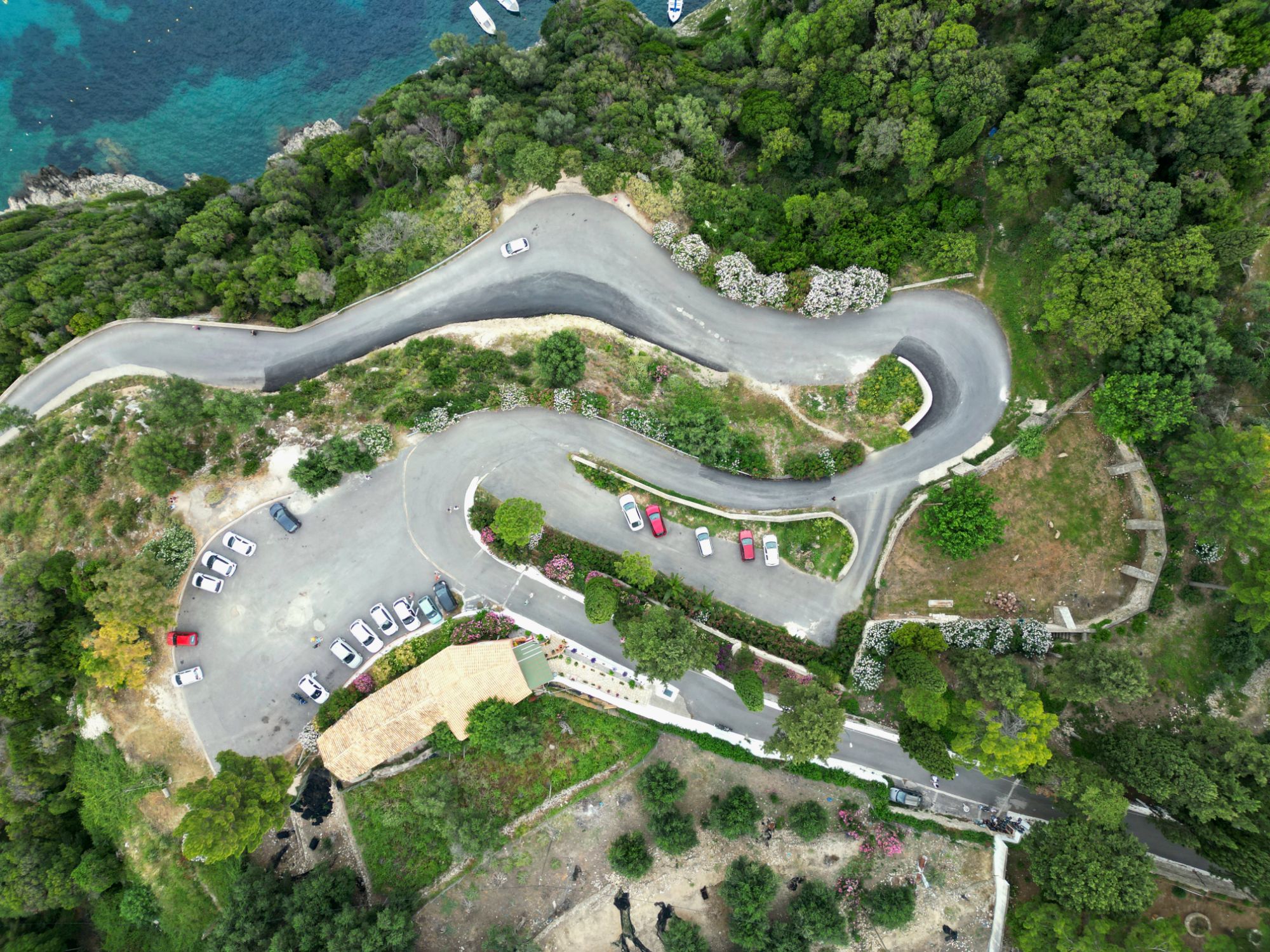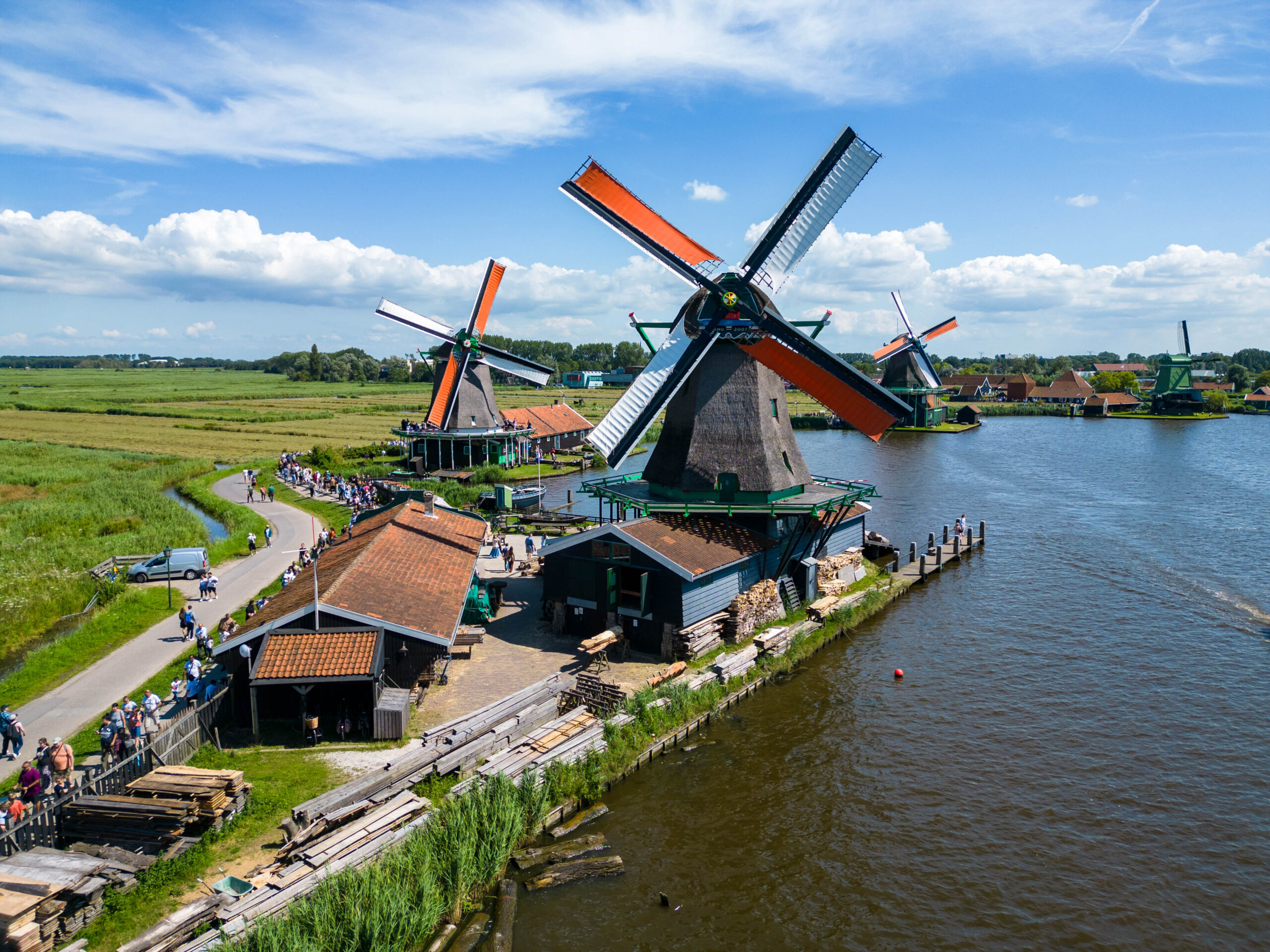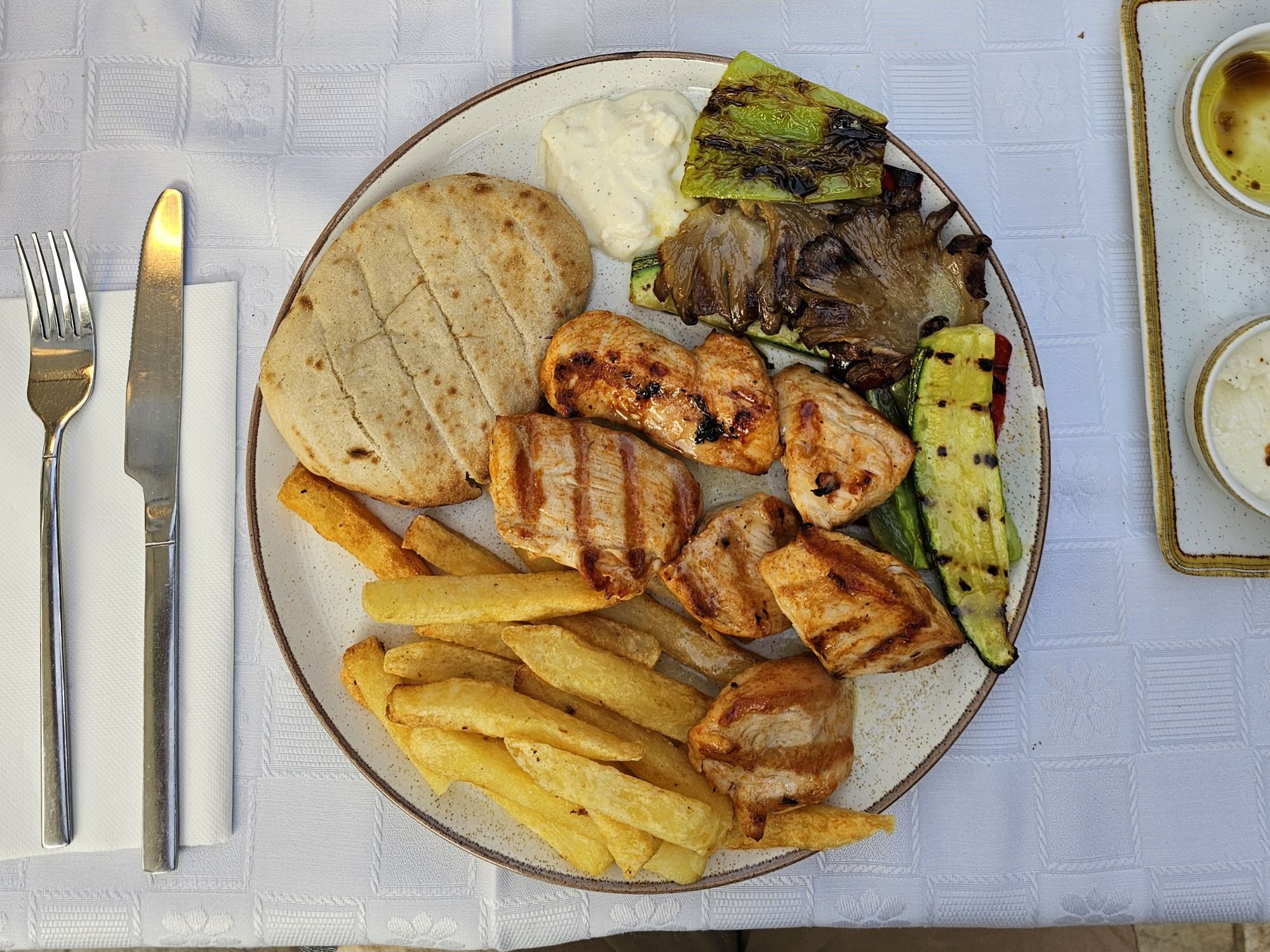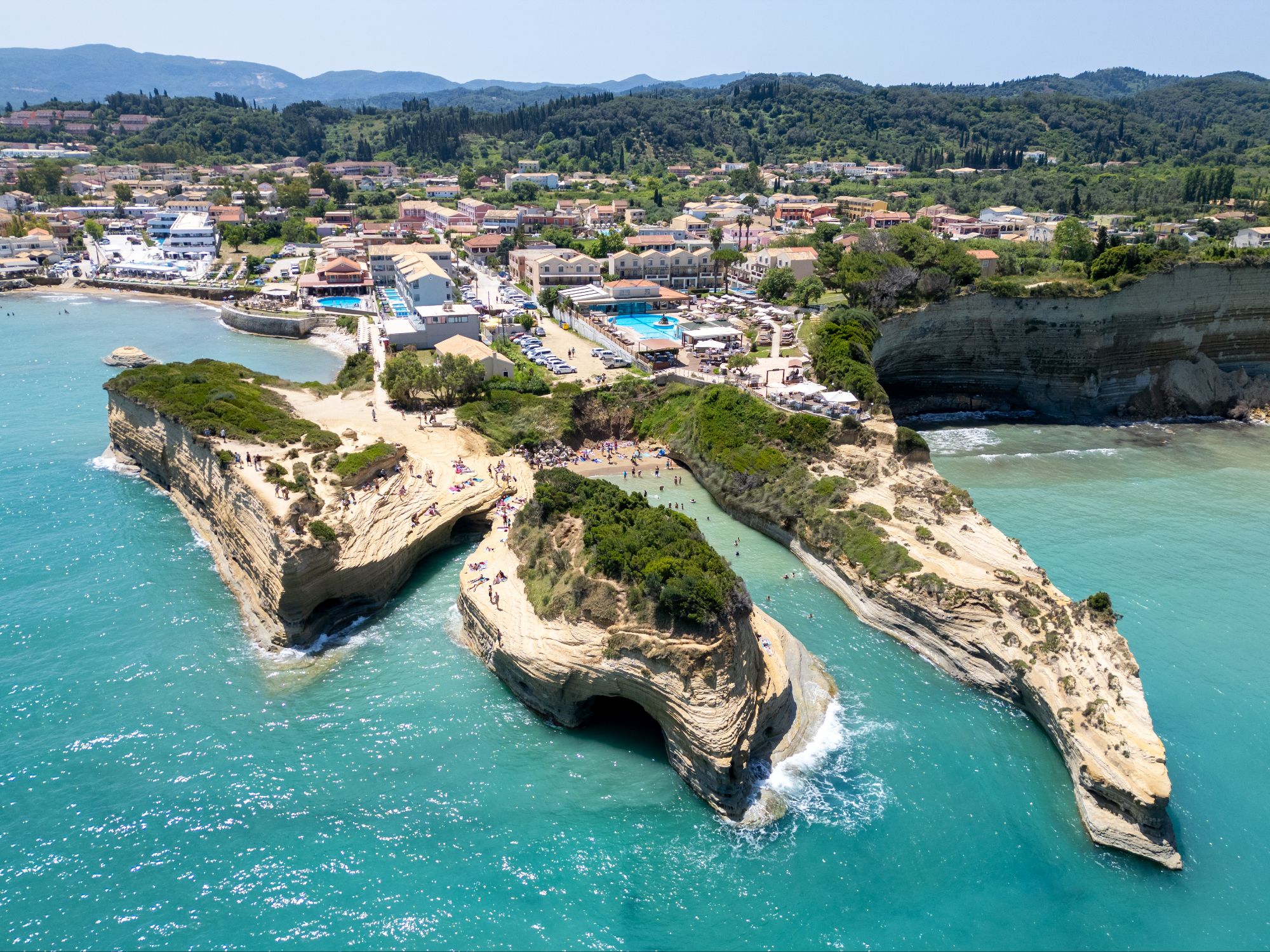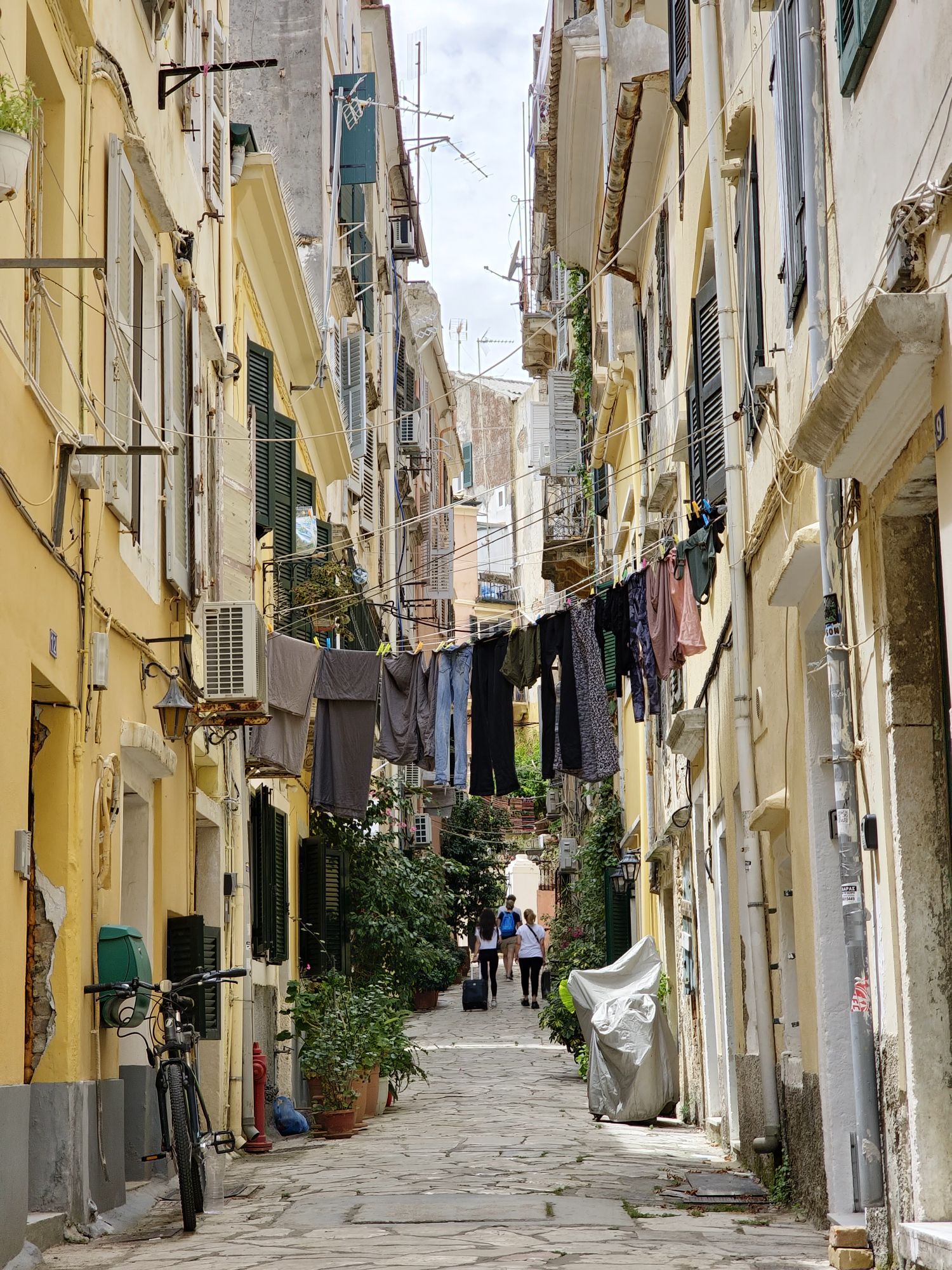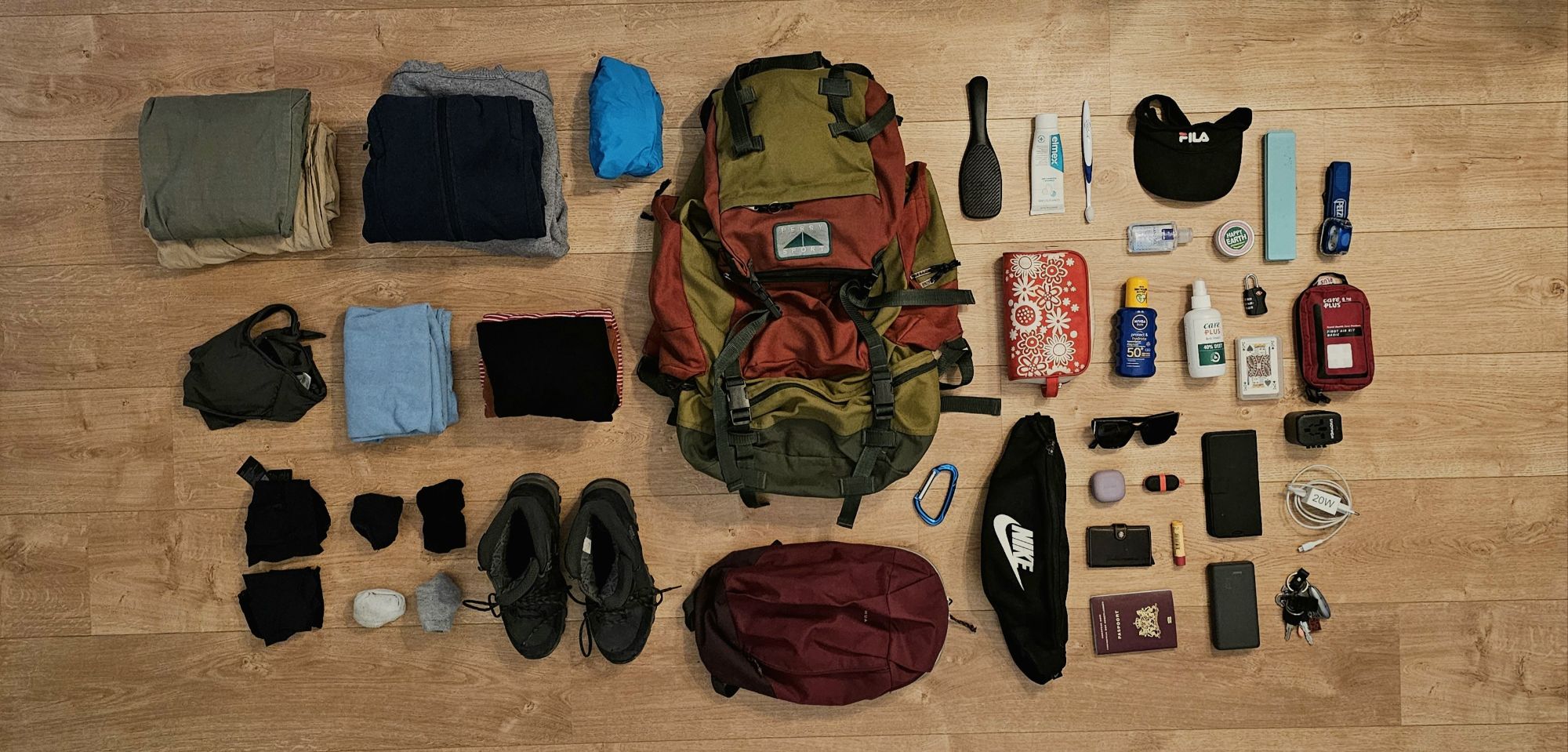Corfu, a gem of the Ionian Sea, offers stunning landscapes, crystal-clear waters, and charming villages that make it an ideal destination for travelers. Getting around Corfu can be an adventure in itself, with a variety of transportation options catering to different preferences. Whether you’re planning to stay near the lively Ipsos Beach, the historical Corfu Town, or the picturesque regions of Paleokastritsa and Afionas, this guide will help you navigate the island and find the perfect spot to lay your head at night.
Transportation Options in Corfu
Buses
Corfu has a pretty okay bus network that connects major towns, beaches, and tourist attractions. To navigate Corfu effectively, we recommend downloading the ‘Corfu Travel Guide’ app, which provides information on bus routes and schedules. There are two types of bus lines in Corfu:
- Green Bus lines: These serve longer distances, connecting Corfu Town with the island’s northern, southern, and western parts.
- Blue Bus lines: which operate within Corfu Town and its suburbs.
Prices
Bus tickets are pretty affordableL
- A day ticket costs €5.
- A one-way tickets costing 2.50 euro’s.
Note: Separate tickets are required for the Green and Blue buslines.


Connections
If you’re staying near Corfu Town, you’ll find good connectivity as many bus routes start or end there. However, if you’re further away, you may need to transfer several times to reach your destination.
Scheduling and Planability
One challenge with using the buses in Corfu is the lack of detailed scheduling information. While Google Maps provides up-to-date information for Blue line Buses, it does not show the shedule for the Green line Buses, leaving you to guess when they’ll arrive. You can usually find approximate departure and arrival times for the start and end points of a route, but there are no times listed for any of the intermediate stops. This can make it difficult to know if you’ve missed your bus.
Frequency of buses
This brings us to the next point: The buses do not run frequently. Green line Buses, in particular, depart only once an hour in the morning and do not operate at all in the afternoon. Missing a bus can leave you stranded, as we experienced.

Crowded
The buses are also very crowded, many times we were squeezed against the doors and against other people.
While the bus system in Corfu is affordable and useful, it does have limitations in terms of connectivity, scheduling, frequency, and comfort. We used the bus to go to Corfu town, which went perfectly fine. However our bustrip to Paleokastritsa was less of a success, missing our connection on the way there and having to wait an hour for the next bus, and having to leave earlier than we’d like because the last bus departed at 19:00. To reach destinations further away we decided to rent a car.
Car Rentals
Renting a car provides a lot of flexibility for exploring Corfu. With a car, you can easily visit multiple attractions in a day, venture off the beaten path, and travel comfortably with family or friends. Car rentals are available at the airport, in Corfu Town, and in other popular tourist areas. Just be aware of parking restrictions and the sometimes challenging driving conditions in more rural areas.

Costs
We rented a car for 2 days from TP rentals for a total cost of 160 euro’s:
- We paid 60 euro’s per day for the smallest car they had (Volkswagen Up, manual) including insurance.
- We paid an additional 5 euro’s per day to buy off our deductible.
- We paid 25 euro’s for fuel, which is pretty cheap, considering we drove nearly 200km!
- We paid 5 euro for parking. We could find free parking nearly everywhere, but always check the signs to avoid an unexpected parkingfine.
Speed Limits
Speed limits in Corfu are generally lower than what you might be used to. In urban areas, the limit is typically 50 km/h (31 mph), while on rural roads it can range from 70 to 90 km/h (43 to 56 mph). Always be on the lookout for speed limit signs, as they can change frequently, especially as you move between different types of roads.

Steep Roads and How to Handle Them
Corfu’s terrain is quite hilly, and you will encounter steep roads, particularly if you venture inland. When driving on steep inclines or declines, use lower gears to maintain better control of your vehicle and to avoid overheating the brakes. Take your time and don’t be afraid to pull over to let faster drivers pass. Always be cautious and anticipate the need to downshift as you approach steep sections.
Easiest Routes and Challenging Routes
For a more relaxed driving experience, stick to the coastal roads. The road along the beach is the easiest to follow, offering gentle curves and beautiful views of the sea. This route is generally less challenging and more forgiving for novice drivers.
However, if you choose to drive through the island, be prepared for more hills and turns. These inland routes can be quite scenic but also more demanding, with narrow roads that require constant attention and careful maneuvering.
💡 Tip: Another popular option is renting a scooter or a quad. Since they don’t take up that much space, parking is a breeze! Just make sure to wear a helmet and drive safely, as some roads can be narrow and winding.
Where to Stay in Corfu
Ipsos Beach


We stayed at Ipsos Beach, which is a bit quieter compared to some of the more popular places on the island. While the beach itself is not particularly special, Ipsos offers plenty of restaurants, shops, and amenities to make your stay comfortable. There is a good bus connection to Corfu Town, making it easy to explore the capital. However, if you want to explore other areas on the island, renting a car is more convenient. Using the bus system to reach these destinations often requires multiple transfers.
Corfu Town


Corfu Town, the island’s capital, is rich in history and culture. While it is less quiet compared to Ipsos Beach, the town offers a more vibrant and charming atmosphere. The town boasts a wide range of restaurants, although they tend to be a bit more expensive than those in Ipsos. It’s ideal for travelers who enjoy exploring museums, art galleries, and vibrant local markets. However, beaches are a bit further away, requiring a short drive or bus ride. If you want to see a lot of the island, but do not want to rent a car, this is this place offers the best bus connections.
Afionas:


Afionas is a very picturesque town, and it is within walking distance of the island’s most beautiful beach: Porto Timoni. It’s also closer to some other beautiful beaches on the north-west side of the island. Staying here provides a more authentic and tranquil experience. A car is recommended if you want to explore further, as it allows you to access the more remote and scenic parts of Corfu at your own pace.
Sidari:


Sidari is a more touristy area known for its beautiful but crowded beaches. Not exactly our cup of tea, but it’s an excellent choice if you’re interested in nightlife and beach bars. The town itself is not particularly charming, but it does offer a wide range of entertainment options, from beach bars to nightclubs, making it a popular destination for those looking to enjoy Corfu’s lively side. If you’d like to explore more of the Northern beaches, these are easily reachable via both bus and car.


